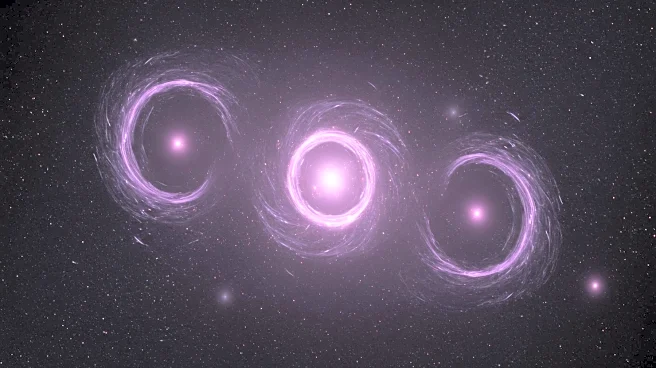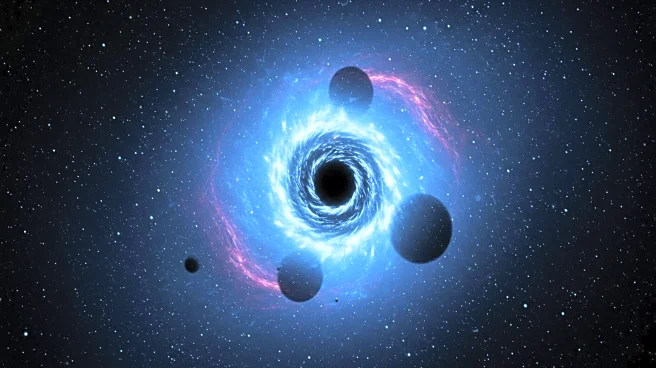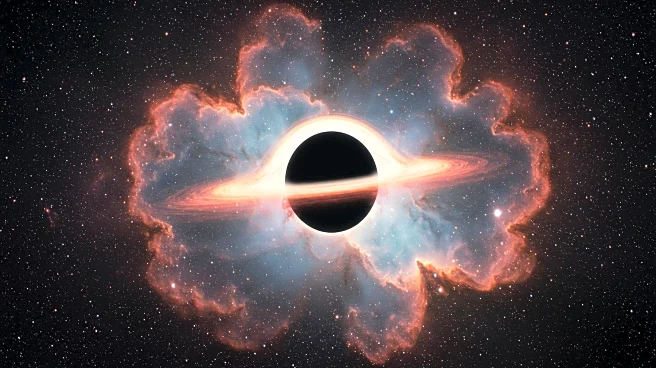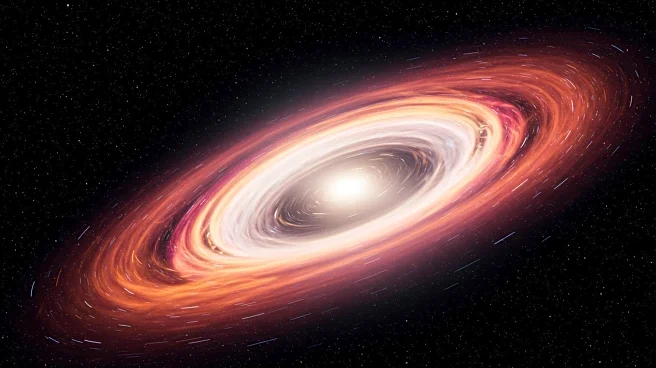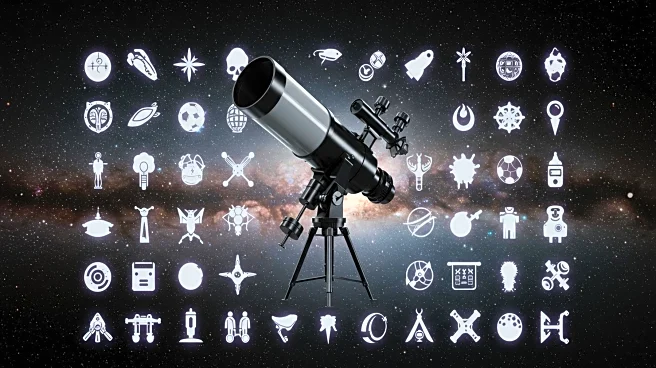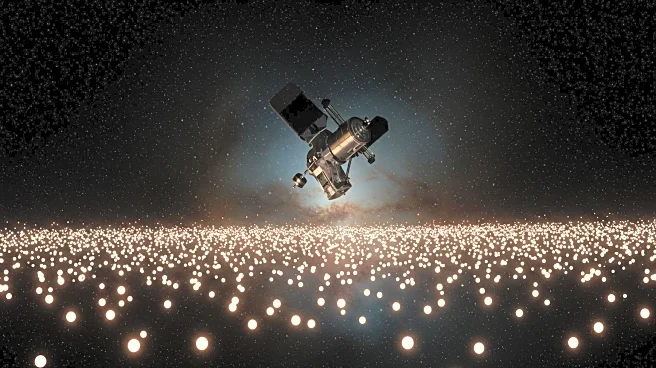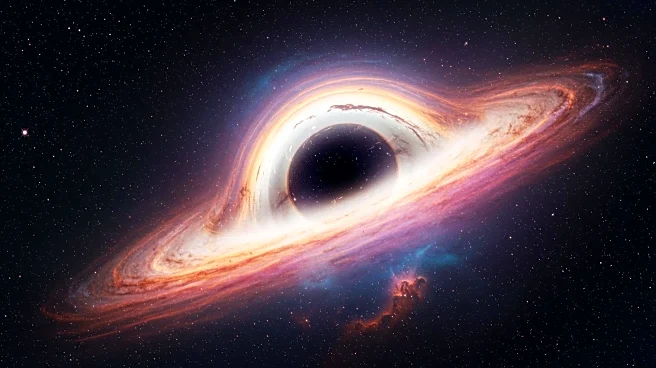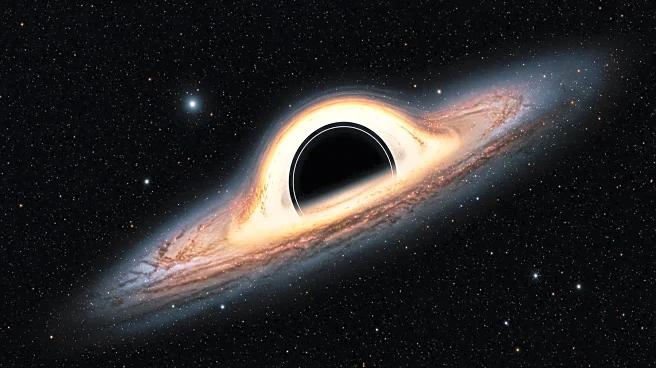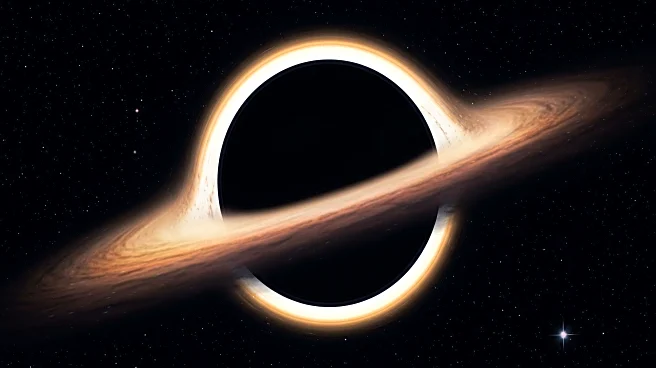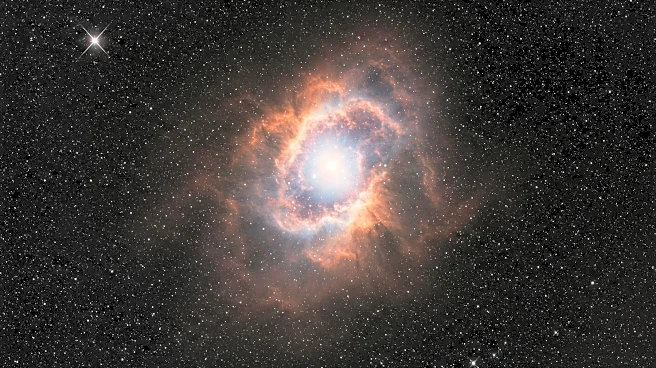What is the story about?
What's Happening?
Astronomers have potentially identified a system of three stellar-mass black holes, marking the first detection of such a configuration. The discovery was made through the analysis of data from the LIGO-Virgo-KAGRA collaboration, which observed anomalous acceleration in a 2019 binary black hole collision. This suggests the presence of a third black hole influencing the system. The event, known as GW190814, involved a merger between two black holes, one of which is the smallest ever detected, teetering on the brink of being a neutron star. The mass ratio between the two black holes indicates a complex gravitational interaction, possibly involving a third, larger object.
Why It's Important?
This discovery is significant as it challenges existing models of black hole formation and evolution, suggesting that black hole mergers can occur in more complex systems than previously understood. The presence of a third black hole in a merger event provides evidence for hierarchical mergers, where multiple mergers lead to increasingly larger black holes. This insight could reshape our understanding of how black holes form and interact, potentially impacting theories about the universe's structure and the dynamics of gravitational systems.
What's Next?
The next observing run of the LIGO-Virgo-KAGRA gravitational wave observatories is expected to yield more data on black hole mergers. This could provide further insights into the environments and conditions under which these complex gravitational interactions occur. Researchers anticipate that new tools and models will be developed to better discern these intricate systems, potentially uncovering more examples of black hole trinaries and other complex configurations.
Beyond the Headlines
The detection of a black hole trinary raises questions about the formation pathways of such systems and the role of gravitational interactions in shaping cosmic structures. It also highlights the potential for undiscovered phenomena within gravitational wave data, encouraging further exploration and innovation in astrophysical research.
AI Generated Content
Do you find this article useful?
